In this article I present my ideas, creative processes and technical data for the patch programmed for the class “Symbolic Sound Processing and Analysis/Synthesis” with Prof. Marlon Schumacher. The idea of this text is to show the technical solutions for my creative ideas and to share the knowledge gained to help the reader with their ideas. The purpose of this patch is to take sounds from everyday life and transform them into your own composition using several processes within Open Music.
Responsible: Veronika Reutz Drobnić, winter semester 21/22
Introduction, Iteration 1
The initial idea of the piece was to transform everyday sounds, for example the sound of a kettle, into a different, processed sound by implementing technical solutions in Open Music. This patch processes and merges several files into one composition. There are three iterations of the patch that I worked on during the semester. I will describe them in chronological order.
The original idea for the patch came from musique concréte. I wanted to make a 2-minute piece from concrete sounds (not synthesized in Open Music, but recorded). This patch consists of three subpatches that are connected to the maquette in the main patch.
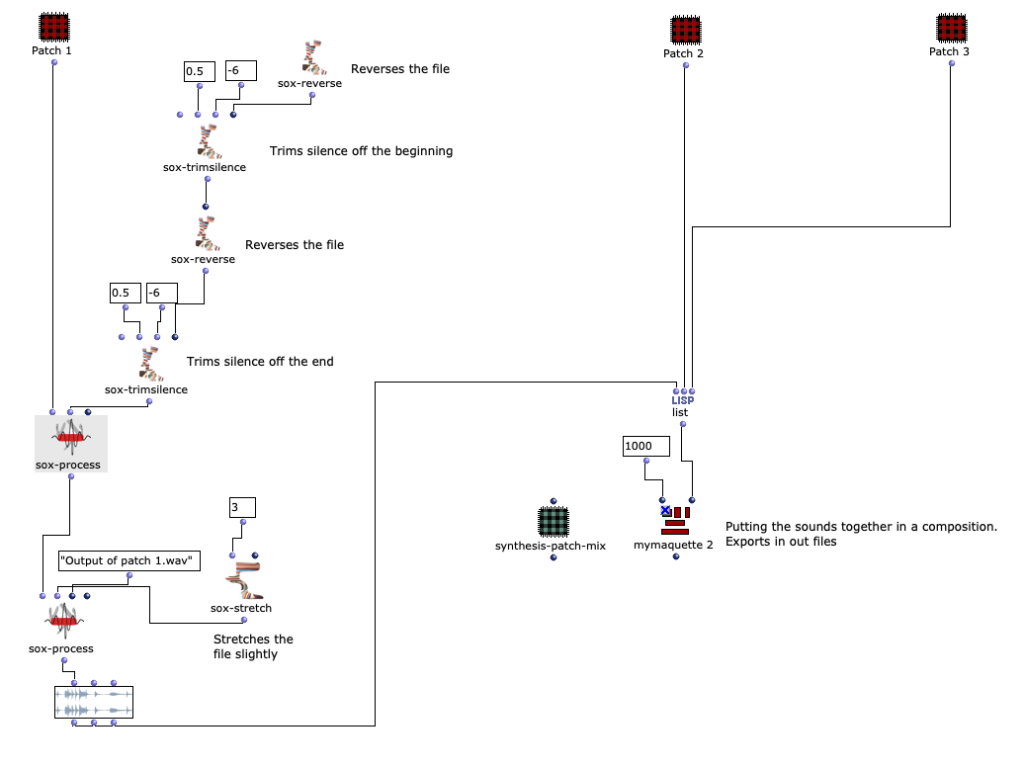
The main patch
When I was thinking about the sounds to use in the piece, I was thinking about how well they would work together, whether the transformations in OM would work well on them, and whether they had any special meaning to the piece. In the end, three percussion improvisations, two kettle sounds and a human voice in a garage were chosen.
Here are some examples:
In the first patch, I developed a graphical filter tool that can be applied directly to a sonogram representation of a sound. The interface is based on the “Surface Filter” tool in the Audiosculpt software. After the sonogram was created, I programmed OM to draw rectangles on the image.
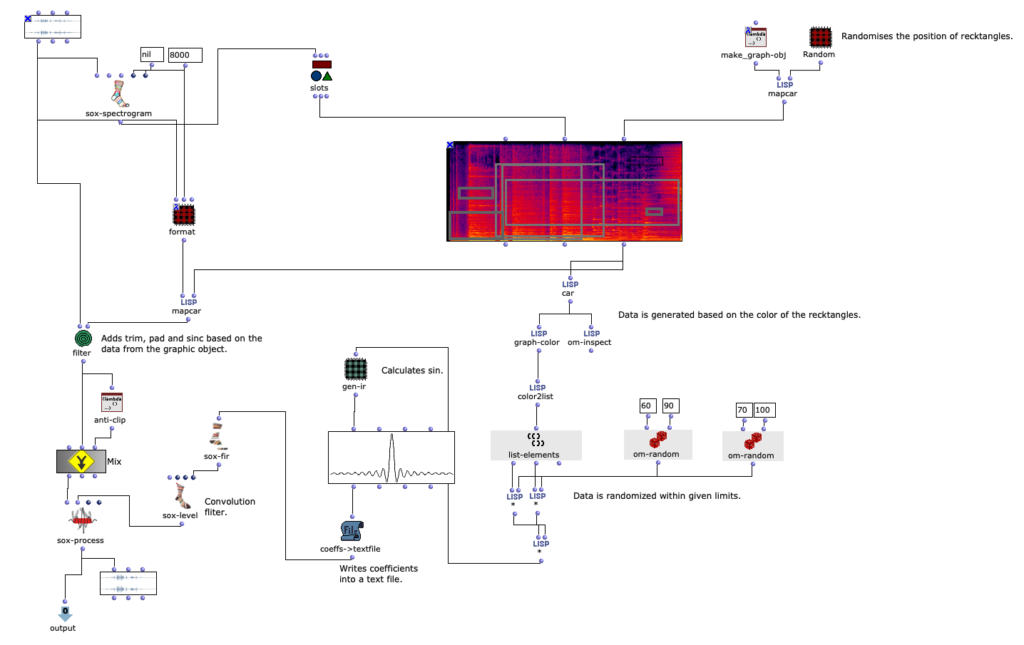
The patch 1
These rectangles are then read by the rest of the patch and only the sounds in the rectangles are audible. The sound used here was a percussion improvisation.
In the second patch, I combined two sounds: another improvisation and the sound of the kettle constantly boiling the water. I then applied a series of filters to the sound.

In the third patch, I used three sounds: the human voice, another improvisation and another recording of the kettle. The patch combines the three and processes them through a series of subpatches by reversing and splitting the files. The result is a broken up, partially reversed sound.

In the end, all three sounds are put together in a specific order in a maquette object.
Here is the result of the first iteration:
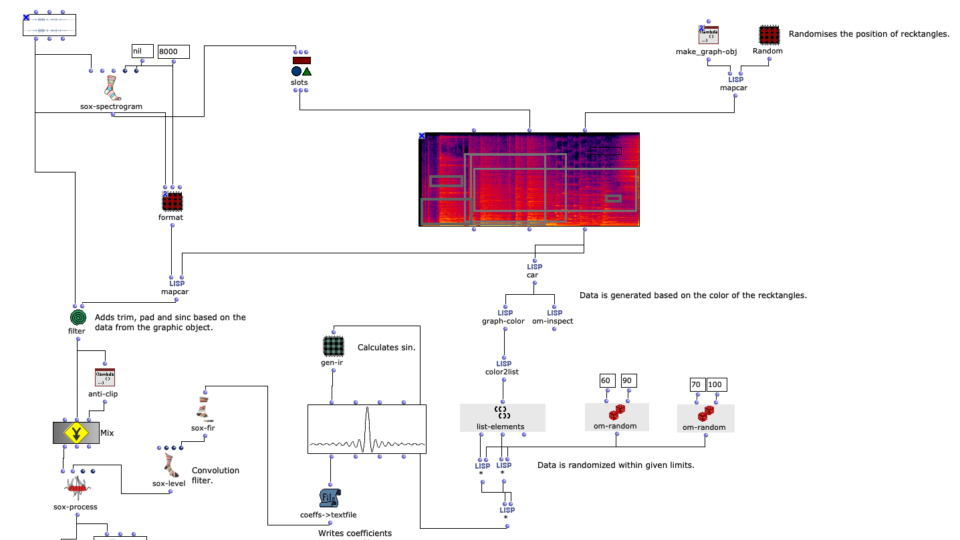
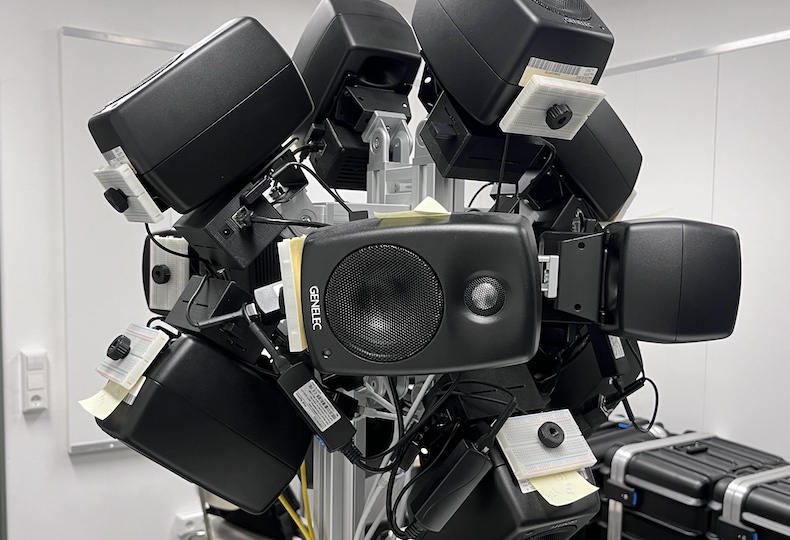
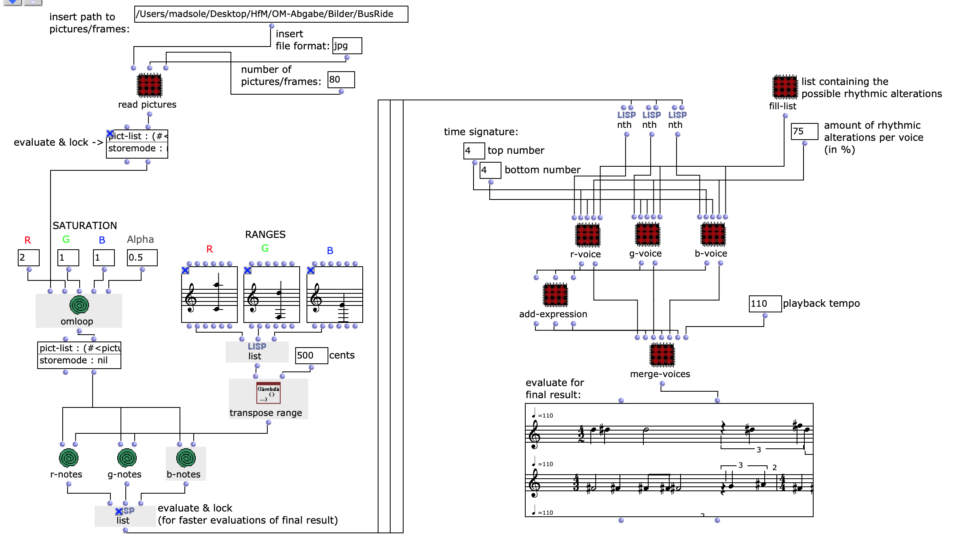
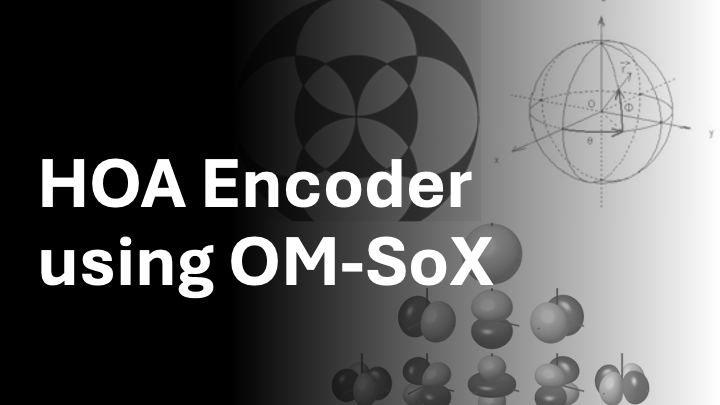
About the author